Our Blog
The contemporary arena’s need for the ‘new’ is unreasonably guided by disassociation or foregoing relation with any predicate. The equally misused business term for this need is ‘disruption’. This amnesia devalues the brilliance of our generation: our mastered skill of formulating newly combined associations that better navigate our world—practiced by means of contemporary culture’s access to seas of unceasing fragments of knowledge. ‘The Origami Method’ is a diagram of seven steps to illustrate the process of evolving contemporary art –or business, or products— by ever-shifting points of reference. The ‘Method’ builds upon an essay written by T.S.Eliot “Tradition and the Individual Talent” [1920].
In the essay, Eliot describes a circumstance in which one conflates the ‘best’ with the ‘never before seen’ in evaluating a poem: that if one were to mark the ‘best’ parts of a poem, he might circle what he considers the most ‘innovative’ parts, those which have never before been written. Eliot suggests that when removing such prejudice from the valuation, the evaluator might rather mark the ‘best’ parts of a poem as the most ‘individual’ parts of a work—a mixture of never before written and innovative reframing of the past where an artist asserts his influences. limeSHIFT boldly equates this chart for art with progressing business.
THE ORIGAMI METHOD: A 7-Step Model for Making Contemporary Art by Folding and Unfolding.
#1|Fold a perfect square in half.
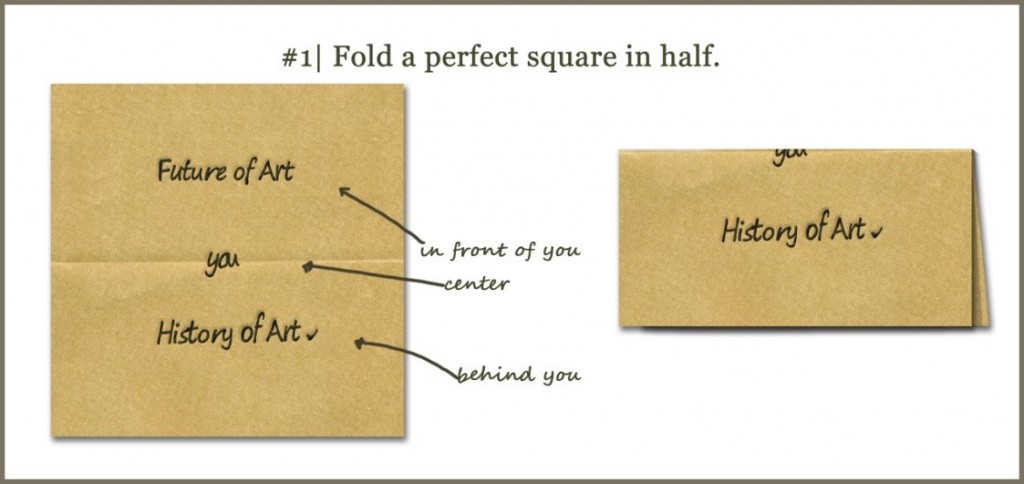
History of Art: What you have seen | What you know | Influences, Mentors
Future of Art: What you will see | What you will learn | What you will influence
You: The edge, the place where the two meet.
#2|Fold down corners to make a pyramid.
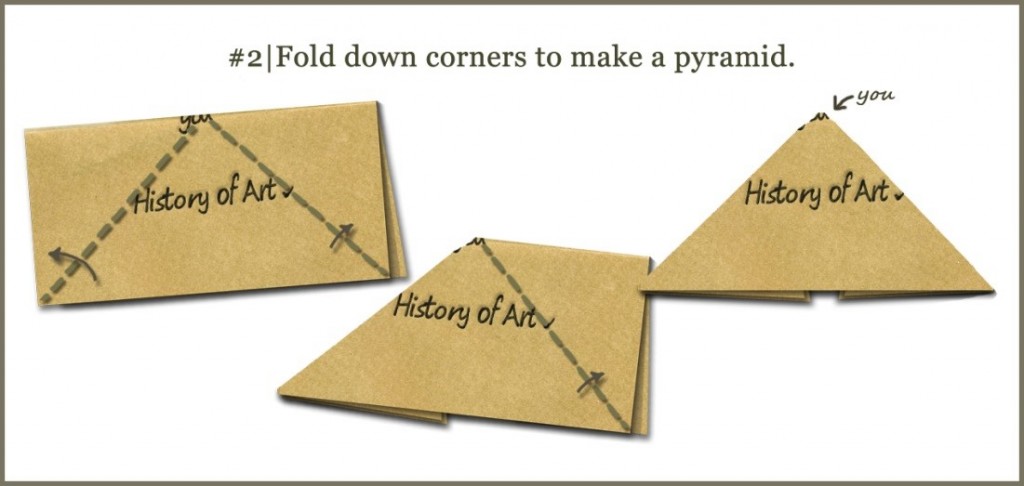
You: A point at the top of the pyramid. The direction you lean re-forms the history of art.
#3|Fold corners back the opposite way to make a pyramid.
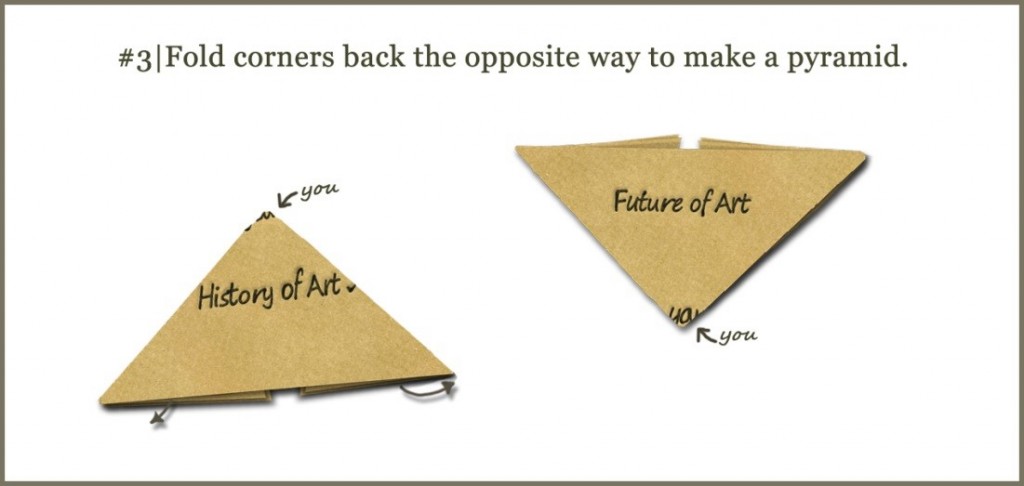
You: A point at the bottom of the pyramid. The direction you lean forms the future of art.
#4|Unfold. Re-fold the corners inward to make a new pyramid.
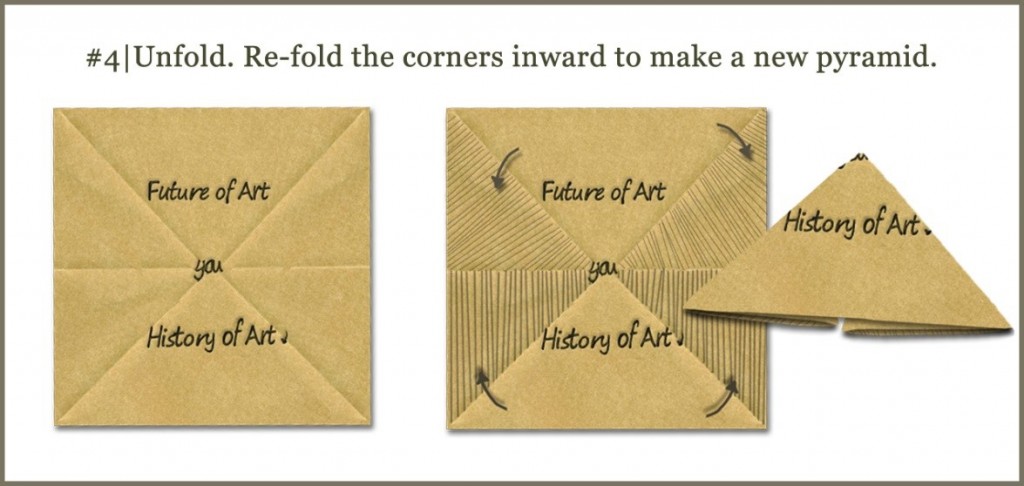
You: The pivot point.
Unfolded, you’ve creased Future and History pyramids to shape an hour-glass with yourself at the center. Your new responsibility is to make links across the two.
Refolded, the hour-glass pyramids face one another, such that you can see clearly both at once.
#5|Fold both pyramid corners up.
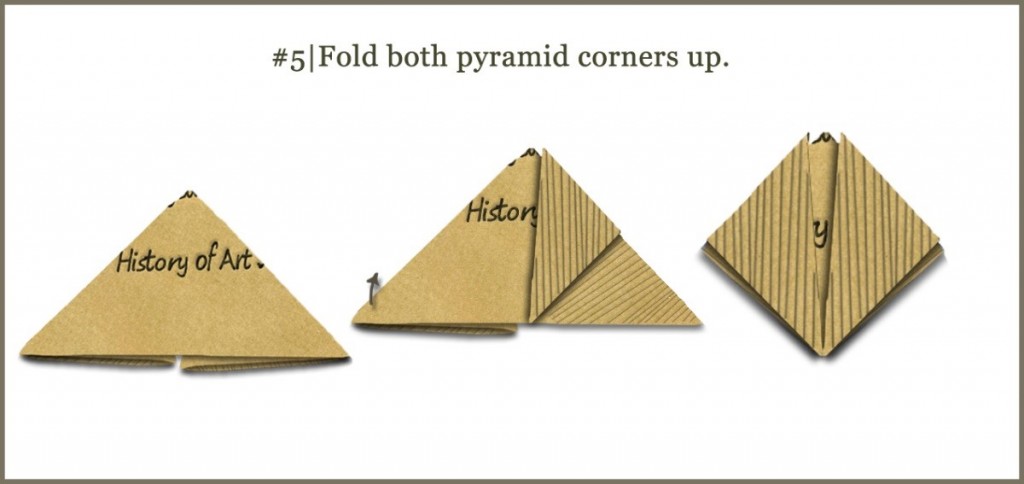
Find the overlaps revealed as you fold them to the surface of both sides.
Notice the mirrored pyramids, a fold to one reveals something about the other.
#6|Fold the sides inward and tuck the corners down into them.
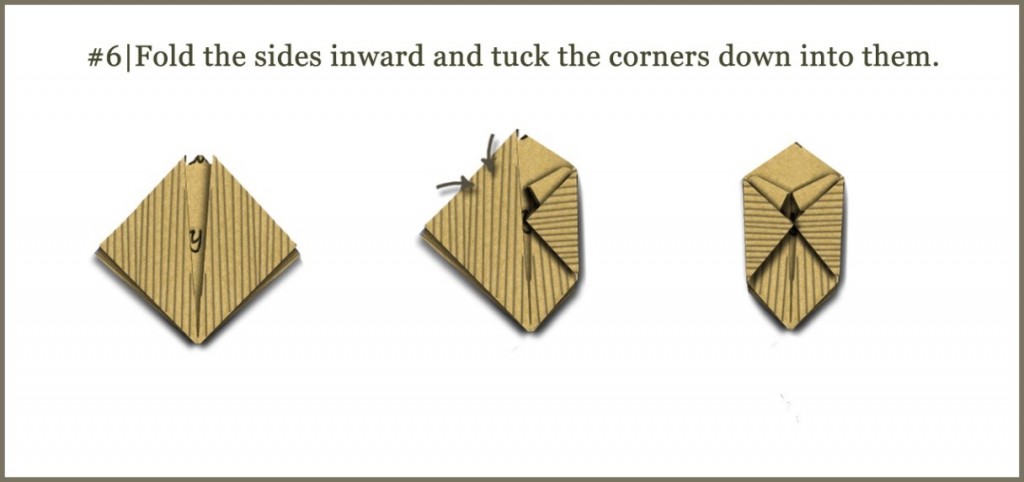
Make more complex folds, facing surfaces against one another.
Notice the complex folding and tucking—threading across the web—has increased the strength of your form and made it smaller.
#7|Un-fold to form a cube. Holding the sides, use the hole to blow inward and expand.
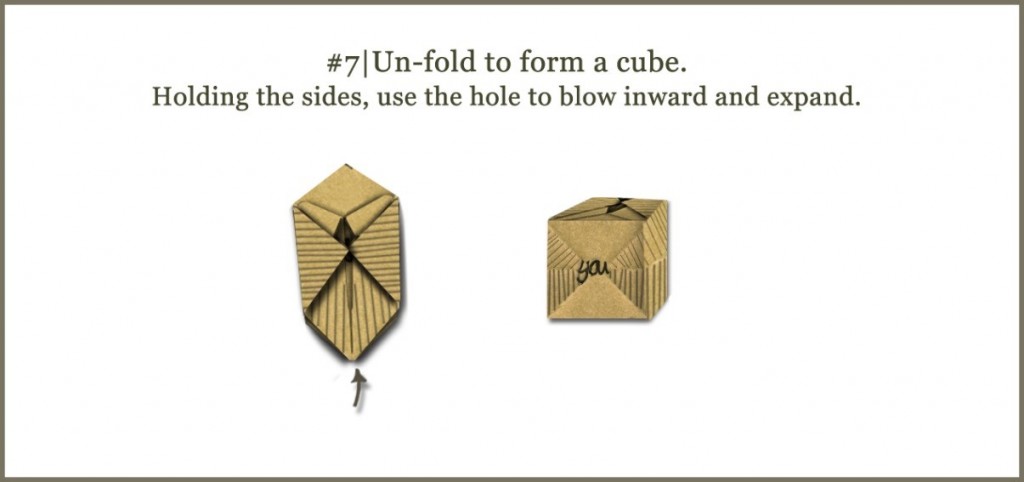
You: A plane expanded from a point, one side of a cube formed and strengthened by folds.
